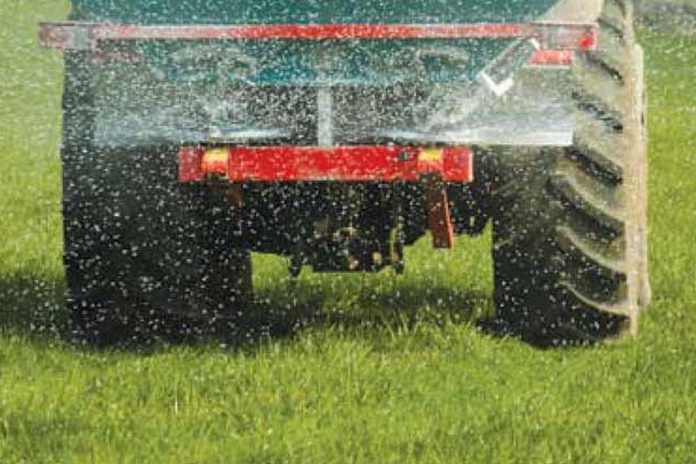Today’s fertiliser spreaders are increasingly complex, writes Dermot Forristal, Teagasc Oak Park.
Accurate and even fertiliser spreading is important to optimise yield and crop/grass quality and to protect the environment.
While there is lots of research on the rates and timing of fertiliser application, we rely on the spreader to apply that fertiliser accurately.
The challenge to spread very variable fertiliser products at bout widths of between 12 and 30m in variable fields is immense.
Spreading evenly
Spreading evenly across the width is the first priority. There are a number of steps that will ensure this is achieved.
- Correct choice of machine for the fertiliser being used at the chosen bout width;
- Use of fertiliser with good physical quality characteristics;
- Correct setting of the machine for fertiliser and bout width using setting resources based on comprehensive tests;
- Correct setting and use of the machine on the field headland and narrow bout widths.
Spreader setting resources
The importance of the availability of good setting resources cannot be over-emphasised, especially on wider spreading machines.
The correct settings for particular fertiliser products can be achieved by size and physical quality matching the fertiliser, with some of those already in the database.
There are two ways that this can be achieved; the simpler form involves characterising the fertiliser using information such as:
- Particle size distribution by sieving (hand-held testers available);
- Density by weighing a volume;
- Particle strength by crush testing;
- Particle shape by matching to images.
The accuracy of this depends on how representative the sample is; how sensitive the spreading mechanism on the spreader is to variation in quality; and how comprehensive the manufacturers full spread-test database is.
Fertiliser can change from season to season and with blended products, even from batch to batch. This makes it very difficult to rely on the database information without verifying that the physical quality matches that in the database.
Settings to spread evenly
The adjustments to be made to ensure even spreading with a particular product depend on the design of the spreading mechanism, which differs significantly between makes and models. The spreader components that may be adjusted to ensure even spreading include:
- Disc type;
- Disc speed;
- Vane type and position on disc;
- Position of fertiliser drop point onto disc;
- Spreader angle to crop and height over crop;
- Disc height over crop/soil, or spreader/disc angle.
The operator’s manual will show how the adjustments can be made.
Headland spreading
Current Oak Park research suggests that fertiliser distribution in the headland areas of fields is quite uneven compared to the in-field area, contributing to yield loss.
There are two challenges: 1) spreading to the boundary and 2) merging the in-field runs with the headland runs.
Merging the in-field runs with the headland runs requires the spreader to be turned on and off at a precise distance from the headland. This can be very difficult with spreaders which throw fertiliser considerable distances.
Accurate GPS systems can automatically control the on/off point making this more precise than can typically be achieved manually, thus avoiding fertiliser waste and crop lodging at the headland.
Conclusion
The impact of fertiliser spreader use on crop/grass performance and profitability can be enormous. Fertiliser must be spread evenly and accurately. Careful setting is essential.





